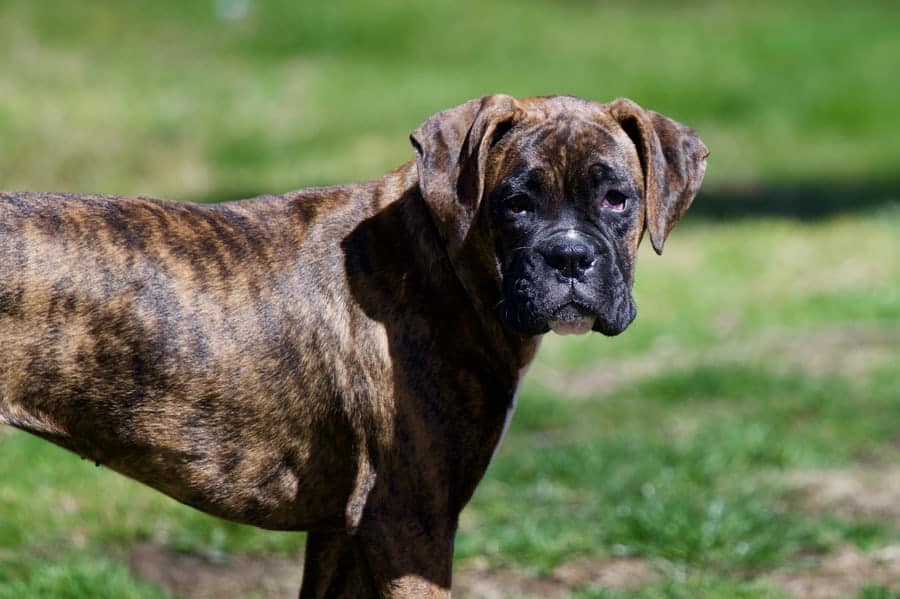


Keep in mind that a particular pup might never face one of these health issues, but the possibility could be there in the gene pool, so it's good to be aware.Įvery dog breed and mix come with their pros and cons, and these are important to be aware of prior to bringing a breed into your household. English Bulldogs are prone to a long list of health concerns, including obesity, heat stroke, elongated soft palate, heart disease, and more.Beagles are prone to epilepsy, intervertebral disk disease, and tumbling puppy syndrome.Corgis are prone to eye problems, glaucoma, and progressive retinal atrophy.Rat Terriers can be prone to allergies, dental problems, and patellar luxation.Fox Terriers can be prone to Legg-Calve-Perthes disease, patellar luxation, congenital hypothyroidism with goiter, and primary lens luxation, among other health issues.
GROWN MINIATURE BOXER SKIN

Boxers can be prone to cardiomyopathy, bloat, hip dysplasia, and hypothyroidism, among other possible health threats.The average reported lifespan of these dogs is between 12 to 15 years. In order to get a better idea of which health problems a puppy might face, you must research the parent breeds involved, and take a look at health issues that are common to them. The resulting puppies from these combinations aren't uniform in size, but they are generally smaller than their purebred namesake and have a basic Boxer look.īecause these dogs have only been bred for a few years, there has been no study on whether there are any specific health issues being produced from these crosses.
GROWN MINIATURE BOXER HOW TO
11 Signs Your Dog Is Going Into Labor Soon & How to Prepare.12 Miniature Dog Breeds That Are Small but Mighty.14 Pics of Mini Beagles That Are Just What the “Dogtor” Ordered.Purebred Boxer x Boston Terrier, which is the mix most used to create the miniature Boxer.Breeds used to create miniature Boxers include: However, keep in mind that they are most definitely not Boxers and are not recognized by any of the major kennel club registries with accepted breeding standards. The miniature Boxer was developed by combining a number of breeds to produce a Boxer-like canine that is significantly smaller than a purebred Boxer. It has the ability to adapt to every climate.In truth, miniature Boxers are not actual downsized versions of purebred Boxers.It is a versatile breed and can be used as a watchdog or guarding dog in police works.A nutritious diet consisting of protein sources like fish and chicken would provide the sufficient amount of energy needed to perform some serious tasks involving strength and agility. FeedingĪn adult boxerdoodle requires around two and a half to three cups of dry dog food every day. Ensure fairness, firmness, and consistency while training the pet. Teach the puppies to become obedient and make them socialize by introducing them to other dogs. Since it does not respond to harsh treatments, taking up rough and oppressive methods for training could backfire and induce stubbornness. Trainingīeing sensitive, smart, and bright by nature, a boxerdoodle can be managed and trained, especially with rewards and treats. However, they are susceptible to allergic reactions, skin infections, PRA, epilepsy, and hip dysplasia. Since these dogs do not suffer from severe genetic health issues, they are often regarded as hardy breed.


 0 kommentar(er)
0 kommentar(er)
